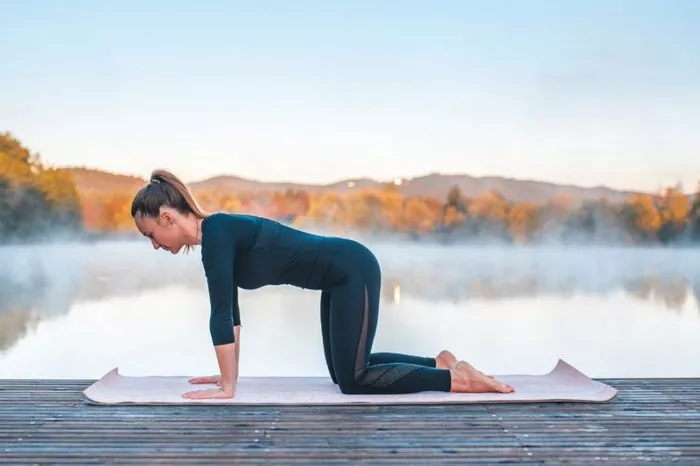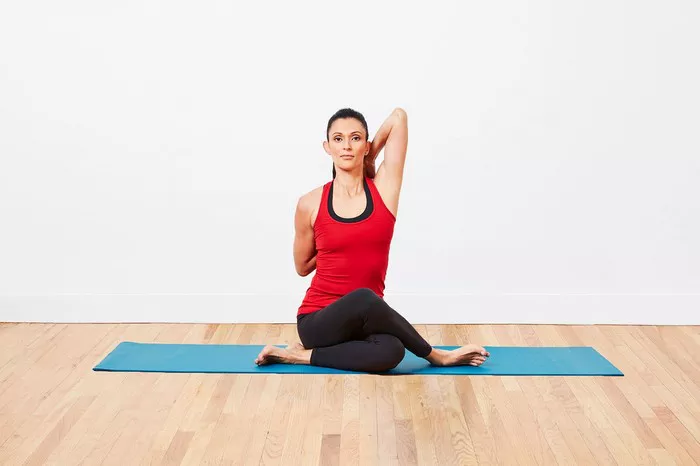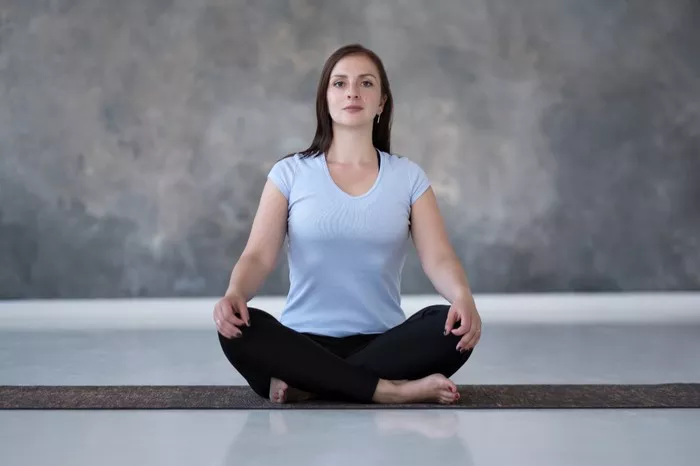Downward Dog, or Adho Mukha Svanasana in Sanskrit, is one of the most well-known and widely practiced poses in yoga. Whether you are a seasoned practitioner or a beginner, it’s highly likely that you’ve encountered this pose during your yoga practice. Its simple yet effective benefits, as well as its pivotal role in connecting other postures, make it an essential part of many yoga sequences, particularly in styles like Vinyasa, Hatha, and Ashtanga.
In this article, we’ll explore what Downward Dog is, how to perform it properly, its numerous benefits, common mistakes to avoid, and variations that can make it accessible to practitioners at any level.
1. Understanding Downward Dog
Downward Dog is a foundational yoga pose that resembles the shape of a dog stretching, which is why it is called “Adho Mukha Svanasana” in Sanskrit. The name breaks down as follows:
- Adho = downward
- Mukha = face
- Svana = dog
- Asana = posture
So, Adho Mukha Svanasana literally means “downward-facing dog pose.”
The posture is an inversion that lengthens the spine and stretches multiple parts of the body. When performed correctly, the pose engages a wide range of muscles, including those of the arms, legs, and core, while promoting flexibility and strength.
2. The Proper Alignment and Technique of Downward Dog
To practice Downward Dog effectively, it’s crucial to maintain proper alignment and form. Here are the key steps for performing the pose:
Start in Tabletop Position: Begin by coming onto your hands and knees on your yoga mat. This is called the tabletop position, where your wrists are aligned directly under your shoulders, and your knees are positioned under your hips. Ensure that your back is neutral, not sagging or overly arched.
Lift Your Hips: From the tabletop position, press your palms into the mat and begin to lift your hips toward the ceiling. As you do this, engage your core muscles to help stabilize your pelvis. The goal is to form an inverted “V” shape with your body.
Align Your Hands and Feet: Ensure that your hands are shoulder-width apart and that your feet are hip-width apart. Spread your fingers wide to create a stable base, pressing into the mat through all ten fingers. Similarly, spread your toes and press your heels towards the floor, although they may not touch the mat initially.
Lengthen Your Spine: Focus on lengthening your spine as you press your hips up and back. Imagine creating a straight line from your hands through your hips to your heels. This will help avoid excessive rounding or arching of the back.
Engage Your Muscles: Activate your core muscles by drawing your navel toward your spine. Engage your thighs to keep your legs strong and straight. If your hamstrings are tight, you can slightly bend your knees to keep the spine lengthened.
Relax Your Head and Neck: Let your head hang freely between your arms, with your ears aligned with your upper arms. Avoid straining your neck or looking forward—your gaze should be towards your navel or the floor between your legs.
Breathing: Breathe deeply and steadily through your nose, maintaining a calm, relaxed breath as you hold the pose. Try to focus on the sensation of breath moving through your body, especially as you extend and release the tension in your limbs.
Hold the Pose: Hold the pose for a few breaths, gradually building the duration over time. When you’re ready to release, bend your knees and lower your hips back to the tabletop position or child’s pose.
3. The Benefits of Downward Dog
Downward Dog is often called a “full-body stretch” because it engages nearly every muscle group. Regular practice offers a wide range of benefits for both the body and the mind.
Physical Benefits
Stretching and Lengthening the Spine: One of the primary benefits of Downward Dog is its ability to lengthen the spine. By lifting the hips and stretching back, the spine is decompressed, promoting flexibility and improving posture.
Strengthens the Upper Body: Downward Dog requires significant strength in the arms, shoulders, and wrists. By pressing the palms firmly into the ground and lifting the hips, you work the muscles of the shoulders, upper back, and arms, which helps improve overall upper body strength.
Improves Hamstring Flexibility: This pose also provides an intense stretch for the hamstrings, which can often become tight due to prolonged sitting. Over time, Downward Dog can help increase the flexibility and mobility of the legs.
Strengthens Core Muscles: As you lift your hips and stabilize your torso, you engage your core muscles. This can help tone and strengthen the abdominal area, improving overall core strength.
Stretches the Calves: Downward Dog also targets the calves, helping to stretch them out, which can be particularly beneficial for those who experience tightness or discomfort in this area.
Improves Balance and Coordination: The posture requires balance, stability, and coordination between different muscle groups. Over time, practicing Downward Dog helps to improve overall body awareness and the ability to balance in other poses.
Mental and Emotional Benefits
Calms the Mind: Downward Dog is a grounding posture that can help calm the nervous system. The deep breathing and focus required for the pose can reduce stress and anxiety, promoting relaxation and mental clarity.
Increases Energy and Alertness: This pose can also help revitalize the body by improving circulation and stimulating the nervous system. It can be invigorating, especially when performed in the morning or during times of fatigue.
Improves Focus: By encouraging mindfulness of breath and alignment, Downward Dog can help practitioners develop greater mental focus. This is especially helpful in practices like Vinyasa, where flowing through sequences requires mental clarity.
4. Common Mistakes in Downward Dog and How to Fix Them
While Downward Dog may seem simple, there are several common mistakes that practitioners often make. Being aware of these issues can help you refine your practice and get the most benefit from the pose.
Sagging or Overarching the Back
A sagging lower back or overly arched back can lead to strain in the lumbar spine. This misalignment can cause discomfort or even injury over time. To fix this, engage your core muscles and imagine drawing your belly button toward your spine. This will help to lengthen the lower back and create a more neutral spine.
Collapsing the Chest
When the chest collapses towards the floor, it limits the stretch in the upper body and prevents the full benefits of the pose. Instead, keep the chest open by drawing the shoulder blades down the back and away from the ears. This will help you avoid collapsing the chest and allow for a deeper stretch.
Locked Knees
Some practitioners may lock their knees in an attempt to straighten the legs, but this can place unnecessary stress on the joints. Instead, keep a slight bend in the knees, especially if your hamstrings are tight. This will allow for a longer spine and prevent strain on the legs.
Looking Forward
In Downward Dog, it’s important to keep the neck neutral. Looking forward or straining the neck can cause discomfort or injury. To fix this, relax your neck and gaze at your navel or the floor between your legs.
5. Variations and Modifications of Downward Dog
While Downward Dog is accessible to most people, modifications can be made to accommodate various levels of flexibility and strength. These modifications can make the pose more accessible and comfortable.
Child’s Pose (Balasana) Modification
If you have difficulty maintaining the full pose, try practicing Downward Dog with your knees on the ground. This will reduce the intensity of the stretch and allow you to focus on alignment without straining the muscles.
Bent Knees
If you find that your hamstrings are tight, keep your knees bent slightly to alleviate strain. This modification will help lengthen the spine and keep your pelvis aligned while still reaping the benefits of the pose.
Elevated Hands
For those with wrist discomfort or limited wrist mobility, placing your hands on blocks or a sturdy surface like a chair can reduce the strain on your wrists while still allowing you to experience the stretch and strength benefits of the pose.
Conclusion
Downward Dog is a versatile and foundational pose in yoga practice. It offers a multitude of physical and mental benefits, from stretching the hamstrings and strengthening the upper body to calming the mind and improving focus. With proper alignment and mindful practice, it can become a powerful tool for increasing flexibility, strength, and overall well-being.
Whether you are new to yoga or a seasoned practitioner, Downward Dog is a pose that you will encounter time and time again. By consistently practicing the pose with attention to form and alignment, you can experience its full range of benefits and incorporate it seamlessly into your yoga practice. So, the next time you step onto your mat, remember to greet the downward-facing dog with awareness, patience, and breath.
Related Topics:





















